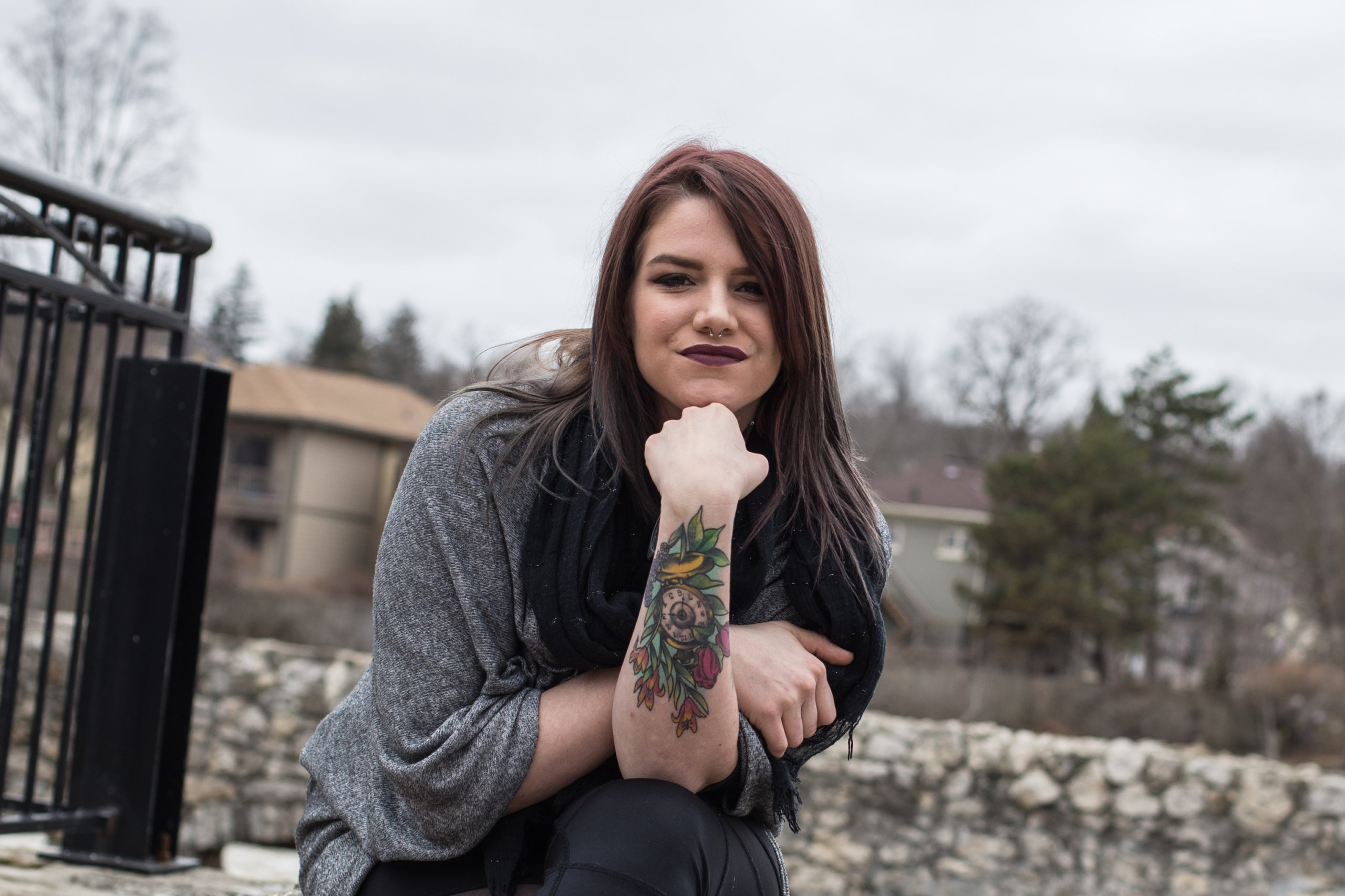This may sound obvious, but many new photographers don’t hold their camera correctly, which causes camera shake and blurry images. Tripods are of course the best way to prevent camera shake, but since you won’t be using a tripod unless you’re shooting in low light situations, it’s important to hold your camera properly to avoid unnecessary movement.
While you’ll eventually develop your own way of holding the camera, you should always hold it with both hands. Grip the right side of the camera with your right hand and place your left hand beneath the lens to support the weight of the camera.
The closer you keep the camera to your body, the stiller you’ll be able to hold it. If you need extra stability you can lean up against a wall or crouch down on your knees, but if there’s nothing to lean on, adopting a wider stance can also help.
2. Start shooting in RAW
RAW is a file format like jpeg, but unlike jpeg, it captures all the image data recorded by your camera’s sensor rather than compressing it. When you shoot in RAW you’ll not only get higher quality images but you’ll also have far more control in post processing. For instance, you’ll be able to correct problems such as over or underexposure and adjust things like colour temperature, white balance and contrast.
One downside to shooting in RAW is that the files take up more space. Additionally, RAW photos always need some post processing so you’ll need to invest in photo editing software.
Ultimately, however, shooting in RAW can transform the quality of your images, so if you have the time and space, it’s definitely worth it. If you’re not sure how to switch from jpeg to RAW, check your camera’s manual for detailed instructions.
3. Understand the exposure triangle
Although it can seem a bit daunting at first, the exposure triangle simply refers to the three most important elements of exposure; ISO, aperture and shutter speed. When you’re shooting in manual mode, you’ll need to be able to balance all three of these things in order to get sharp, well-lit photos.
ISO: ISO controls the camera’s sensitivity to light. A low ISO setting means the camera will be less sensitive to light, while a higher ISO means it will be more sensitive to light. An ISO setting of 100 to 200 is usually ideal when shooting outdoors during the day, but when shooting in low light situations, such as indoors or at night, a higher ISO of 400 to 800 or higher might be necessary.
Aperture: Aperture is the opening in your lens and controls how much light gets through to the camera’s sensor. A wider aperture (indicated by a lower f-number) lets more light through, while a narrow aperture (indicated by a higher f-number) lets less light through. A wide aperture is great when you want to isolate your subject, but when you want the whole scene to be in focus, such as with group shots, you’ll need to use a narrow aperture.
Shutter speed: Shutter speed controls how long the shutter stays open when you take a picture. The longer the shutter stays open, the more light gets through to the camera’s sensor. A fast shutter speed is good for freezing action, while a longer shutter speed will blur motion.
4. Wide aperture is best for portraits
When shooting portraits, whether of people or animals, your subject should be the main focus of the picture and the best way to achieve this is to use a wider aperture. This will keep your subject sharp, while blurring out any distractions in the background.
Keep in mind that a smaller f/ number means a wider aperture and the wider the aperture, the more dramatic this effect will be. Some lenses can go as low as f/1.2, but even apertures of f/5.6 can do the trick. To better understand how the aperture affects your images, switch to Aperture Priority Mode (Av or A) and try taking some shots with different apertures.
5. Narrow aperture is best for landscapes
Landscape photographs require a different approach, because everything from the rocks in the foreground to the mountains in the background should be sharply in focus. So any time you’re shooting a scene where you want everything to be fully in focus, you should select a narrow aperture rather than a wide one.
A larger f/ number means a narrower aperture, so go towards f/22 or higher, depending on what your lens allows. Again, using Aperture Priority Mode (Av or A) will allow you to experiment with different apertures without having to worry about adjusting the shutter speed each time.
6. Learn to use Aperture Priority and Shutter Priority modes
If you want to venture out of automatic mode but don’t feel confident enough to switch to manual yet, Aperture Priority Mode (A or Av) and Shutter Priority Mode (S or Tv) are two very useful options that are available on most cameras and will give you more control without being overly complicated.
Aperture Priority Mode lets you select the aperture you wish to use and then the camera adjusts the shutter speed accordingly. So for instance, if you’re shooting a portrait and want to blur the background, you could simply select a wide aperture and let the camera figure out what shutter speed is appropriate.
In Shutter Priority Mode, you select the shutter speed you want to use and the camera will select the aperture for you. So for example, if you want to get a clear shot of your dog racing towards you, you can select a fast shutter speed and let the camera choose the aperture for you.

Leave a Reply